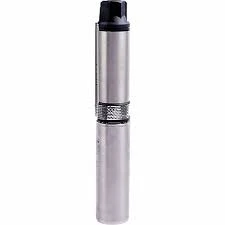Dec . 28, 2024 17:39 Back to list
Techniques for Successfully Extracting Submersible Well Pumps from Deep Water Sources
Pulling Submersible Well Pumps A Comprehensive Guide
Submersible well pumps are essential components of modern water supply systems, often employed in residential, agricultural, and industrial applications. These pumps are designed to be submerged underwater, allowing them to effectively lift water from wells, boreholes, or deep water sources to the surface. However, there are times when these pumps need to be pulled for maintenance, inspection, or replacement. This article provides an in-depth look at the process of pulling submersible well pumps and highlights important considerations along the way.
Understanding Submersible Well Pumps
Before delving into the pulling process, it’s important to understand the structure and functionality of submersible well pumps. These pumps typically consist of a multi-stage centrifugal pump and an electric motor sealed in a waterproof housing. The motor drives the impellers that push water to the surface through a discharge pipe. Submersible pumps are preferred for deep wells because their design allows them to function efficiently in high-pressure environments.
Reasons for Pulling a Submersible Pump
There are several reasons why a submersible well pump may need to be pulled from its location. Common reasons include
1. Routine Maintenance Regular maintenance is vital for ensuring that the pump operates at its optimal efficiency. Pulling the pump allows for inspection of the motor, impellers, and other components for wear and tear.
2. Blockages Sometimes, debris or sediment can lead to blockages in the pump or the well screen. Pulling the pump enables technicians to clear these obstructions.
3. Mechanical Failure If the pump is not functioning correctly—whether due to electrical failures, bearing problems, or mechanical seals—removing the pump will allow for repairs or replacement.
4. Upgrades Technological advancements may necessitate upgrading older pumps to more efficient or capable models.
The Process of Pulling a Submersible Pump
pulling submersible well pump

Pulling a submersible well pump can be a challenging task that requires careful planning and execution. Here’s a step-by-step guide to the process
1. Preparation Before starting, ensure that all necessary tools and safety equipment are available, including wrenches, pulleys, and lifting gear. It’s also critical to assess the electrical connections and shut off power to the pump to avoid hazards.
2. Disconnecting the Pump The first step in pulling the pump is to disconnect it from the power supply and any associated piping or valves. This ensures a safe and uncontrolled release of water.
3. Lifting the Pump Using a pulley or a well-pulling machine, attach a cable or chain to the pump. Carefully begin to lift the pump vertically. This process requires patience, as the pump may be heavy and may have accumulated sediment or mineral deposits that can make it more cumbersome.
4. Inspection Once the pump is at the surface, clean it thoroughly and inspect all components. Look for signs of wear, corrosion, and any potential issues that may have caused the pump failure.
5. Maintenance and Repair Based on the inspection, perform any necessary maintenance or repair work. This may include replacing worn parts, cleaning impellers, or fixing electrical components.
6. Reinstallation After completing repairs or maintenance, carefully lower the pump back into the well. Ensure that all electrical connections are secure and that the pump reattaches properly to the piping.
7. Testing Finally, restore the power supply and perform a test run of the pump to ensure that it operates efficiently and effectively.
Conclusion
Pulling submersible well pumps is a crucial task that, when performed correctly, can extend the lifespan of the pump and guarantee a reliable water supply. Regular maintenance and prompt action upon noticing a malfunction can save time and resources in the long run. Therefore, understanding the nuances involved in the pulling process is essential for both professionals and homeowners relying on these critical systems. With the proper knowledge and tools, anyone can ensure that their submersible well pump remains in optimal working condition, keeping water access uninterrupted.
-
Submersible Water Pump: The Efficient 'Power Pioneer' of the Underwater World
NewsJul.01,2025
-
Submersible Pond Pump: The Hidden Guardian of Water Landscape Ecology
NewsJul.01,2025
-
Stainless Well Pump: A Reliable and Durable Pumping Main Force
NewsJul.01,2025
-
Stainless Steel Submersible Pump: An Efficient and Versatile Tool for Underwater Operations
NewsJul.01,2025
-
Deep Well Submersible Pump: An Efficient 'Sucker' of Groundwater Sources
NewsJul.01,2025
-
Deep Water Well Pump: An Efficient 'Sucker' of Groundwater Sources
NewsJul.01,2025
-
 Submersible Water Pump: The Efficient 'Power Pioneer' of the Underwater WorldIn the field of hydraulic equipment, the Submersible Water Pump has become the core equipment for underwater operations and water resource transportation due to its unique design and excellent performance.Detail
Submersible Water Pump: The Efficient 'Power Pioneer' of the Underwater WorldIn the field of hydraulic equipment, the Submersible Water Pump has become the core equipment for underwater operations and water resource transportation due to its unique design and excellent performance.Detail -
 Submersible Pond Pump: The Hidden Guardian of Water Landscape EcologyIn courtyard landscapes, ecological ponds, and even small-scale water conservancy projects, there is a silent yet indispensable equipment - the Submersible Pond Pump.Detail
Submersible Pond Pump: The Hidden Guardian of Water Landscape EcologyIn courtyard landscapes, ecological ponds, and even small-scale water conservancy projects, there is a silent yet indispensable equipment - the Submersible Pond Pump.Detail -
 Stainless Well Pump: A Reliable and Durable Pumping Main ForceIn the field of water resource transportation, Stainless Well Pump has become the core equipment for various pumping scenarios with its excellent performance and reliable quality.Detail
Stainless Well Pump: A Reliable and Durable Pumping Main ForceIn the field of water resource transportation, Stainless Well Pump has become the core equipment for various pumping scenarios with its excellent performance and reliable quality.Detail
